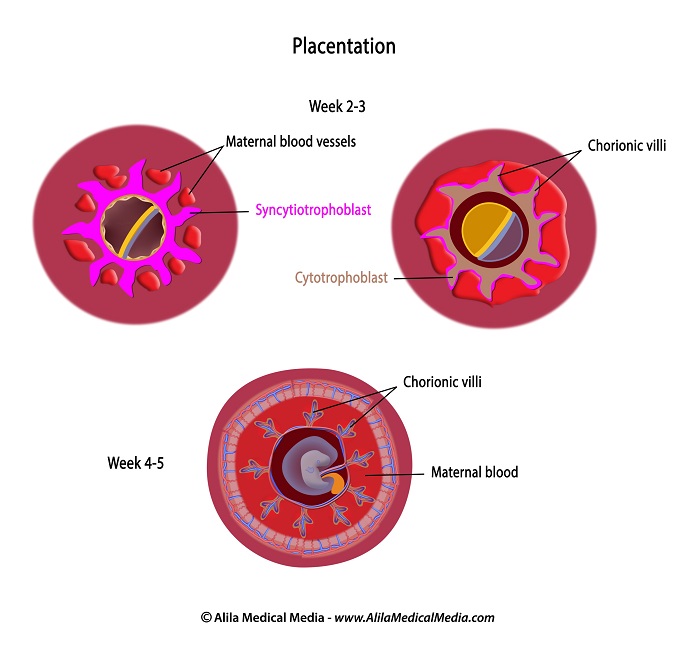Placentation & Fetal Circulation Explained Clearly
Development of the Placenta and Fetal Circulation explained in 5 min - It's mind-boggling how simple it is!
This lesson includes an animated video lecture, downloadable images, quiz questions and a PDF
Prenatal nutrition consists of 2 major phases:
- the trophoblastic phase, where the trophoblast digests and derives nutrition from endometrial tissue, from week 2 to week 8,
- and the placental phase from week 9 onward.
There is a long transition period, from week 4 to 12, where the placenta gradually takes over the role of feeding the embryo. In week 1 the conceptus consumes nutrients stored in the egg cytoplasm and uterine milk/secretions. (Age is counted from fertilization/conception).

Placental development: The placenta is a hybrid organ containing both maternal and fetal components. It develops from the deeper layer of the endometrium and the trophoblast of the embryo.
- In week 2, the superficial layer of the trophoblast - the syncytiotrophoblast - invades and digests the nearby endometrial tissue, while maternal capillaries at the implantation site begin to dilate, forming sinusoids. As these events continue, maternal blood vessels surrounding the embryo are slowly dissolved.
The deeper layer of the trophoblast - the cytotrophoblast - then invades the syncytiotrophoblast to form the primary chorionic villi.
- In week 3, extraembryonic mesoderm cells fill the villi and differentiate into fetal blood vessels, including the three umbilical vessels that connect the embryo to the placenta...
Subscribe to our "Anatomy and Physiology" course below to continue!
This content is available within the following courses:

Anatomy and Physiology: More than 80 animations, plus downloadable PDFs, downloadable images, and quizzes.

Anatomy and Physiology: More than 80 animations, plus downloadable PDFs, downloadable images, and quizzes.